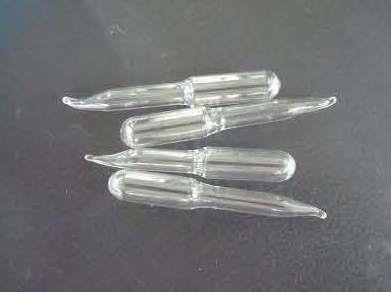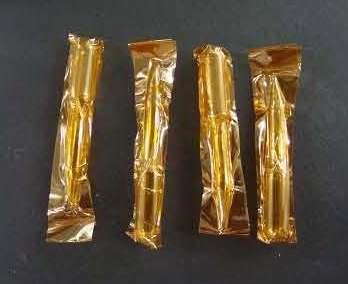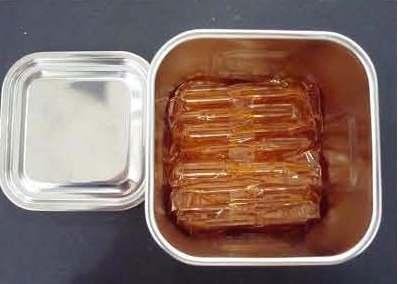- completed
[Space Pup]
Effect of space environment on mammalian reproduction
- Biology and Biotechnology
ISS Science for Everyone
SCIENCE OBJECTIVES FOR EVERYONE
Space Pup represents the first step towards studying the effects of space radiation on mammalian reproduction, which must be understood to sustain life beyond Earth. This starts by holding freeze-dried mouse sperm aboard the International Space Station for one, 12, and 24 months, and then fertilizing mouse eggs on Earth to produce mouse pups to study the effects of space radiation.
SCIENCE RESULTS FOR EVERYONE
Where do babies come from? Someday they may come from space! Freeze-dried mouse sperm flown aboard the space station showed no overall difference in structure and only slightly increased DNA damage compared to controls kept on the ground. In-vitro fertilization with space-flown and control sperm resulted in similar birthrates and, when some of the resulting pups were mated after reaching adulthood, this second generation showed normal gene expression profiles. These findings demonstrate that damage to DNA from space radiation did not affect production of viable offspring, suggesting that sperm DNA damage was decreased or repaired after fertilization; at least after 9 months of preservation on the International Space Station.
Experiment Description
RESEARCH OVERVIEW
- Sustaining life beyond Earth orbit will require a clear understanding of how the environment in space affects key phases of mammalian reproduction. Recently, a study was done on mammalian fertilization and preimplantation development under simulated microgravity (simulated μG) using three-dimensional (3D) clinostat conditions. Although fertilization occurred normally in vitro under simulated μG, the offspring birth rate was significantly lower than the 1G controls due to the poor development of placental cells. This suggests that mammalian species may have difficulty reproducing in space, and highlights the importance of performing experiments in actual, rather than simulated, space conditions in order to verify these results.
- Because of the difficulty of conducting such experiments in live animals, most studies on reproduction in space have thus far been carried out in species such as fish or amphibians. Mammalian embryos can only be cultured for a few days, meaning that such experiments may require difficult in vivo procedures that could pose technical challenges for the astronauts. In a previous study, it was found that freeze-dried spermatozoa can be preserved at room temperature without losing their fertilization capacity. This is advantageous for space experiments because the samples have lower mass and do not require a freezer for storage during launch or landing. These freeze-dried spermatozoa will be kept on board the ISS in the Japanese Experiment Module "Kibo" and exposed to cosmic radiation for several months. After this sample returns to the ground, we will try to make offspring from them and examine the effects of cosmic radiation on sperm DNA.
- This research will be the first step for studying mammalian reproduction in space. We hope to expand on this study by developing an automatic culturing system for frozen embryos, as well as animal cages to maintain live animals in space, and ultimately to attempt to produce live offspring under space conditions.
DESCRIPTION
Sustaining life beyond Earth orbit will require a clear understanding of how the environment in space affects key phases of mammalian reproduction. Recently, a study was done on mammalian fertilization and preimplantation development under simulated microgravity (simulated μG) conditions using a three-dimensional (3D) clinostat. Although fertilization occurred normally in vitro under simulated μG, the offspring birth rate was significantly lower than the 1G controls due to the poor development of placental cells. This suggests that mammalian species may have difficulty reproducing in space, and highlights the importance of performing experiments in actual, rather than simulated, space conditions in order to verify these results.
However, because of the difficulty of conducting such experiments in live animals, most studies on reproduction in space have thus far been carried out in species such as fish or amphibians. The gametes and embryos of these species are comparatively easy to manipulate for use in reproduction experiments, reducing the need to maintain live animals. Mammalian embryos, on the other hand, can only be cultured for a few days, meaning that such experiments may require difficult in vivo procedures that could pose technical challenges for crew members. For this reason experiments on mammalian reproduction in live animals or gamete cells was considered unfeasible using present-day technology.
In a previous study, we found that freeze-dried spermatozoa can be preserved at room temperature without losing their fertilization capacity. This is advantageous for space experiments because the samples have lower mass and do not require a freezer for storage during launch or landing. These freeze-dried spermatozoa will be kept on board the ISS in the Japanese Experiment Module "Kibo" and exposed to cosmic radiation for several months. After this sample returns to the ground, we will try to make offspring from them and examine the effects of cosmic radiation on sperm DNA.
Media Gallery





Applications
SPACE APPLICATIONS
Sustaining life beyond Earth either on space stations or other planets requires a clear understanding of how the space environment affects key phases of mammalian reproduction. So far only non-mammals have been used in reproductive studies in space. Studies using simulated microgravity on Earth showed birth rates due to poor placental development, indicating that microgravity has an adverse but unknown role in fertilization and gestation. Space Pup will help isolate radiation as a factor in long-term studies.
EARTH APPLICATIONS
The gestational period is highly sensitive to environmental factors, including radiation and potentially the effects of gravity. Results from this experiment should provide valuable information for the collection and preservation of mammalian reproductive tissue for a range of uses.
Operations
OPERATIONAL REQUIREMENTS AND PROTOCOLS
Samples need cold stowage in ISS. Sample transfer is requested from HTV to MELFI within 14 days from the turn over of the sample.We request transfer sample from undock to receiving in 3 days (Within 7 days from removal of the sample from MELFI to receiving on the ground).Please provide temperature data of On-orbit.
3 Space Pup Sample Cases (containing freeze-dried samples) will be launched at ambient. Space Pup Sample Cases should be kept at -95°C in MELFI on board for several months (about (1) one month, (2) 12 months, (3) 24 months). On Board operation is only to keep these samples at-95°C in MELFI. Space Pup Sample Cases will be returned one by one at ambient.
Publications
PRINCIPAL INVESTIGATOR(S)
WAKAYAMA Teruhiko [University of Yamanashi]
Unless specified otherwise, rights to all images belong to ©JAXA



